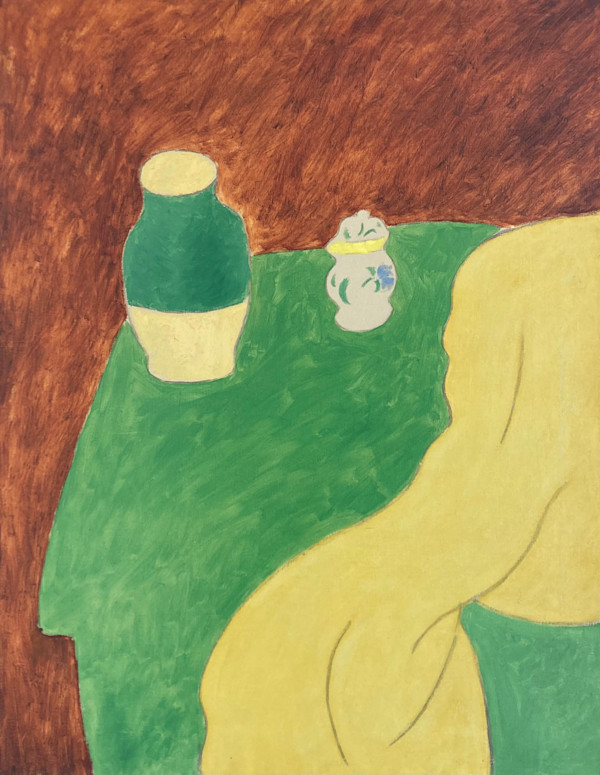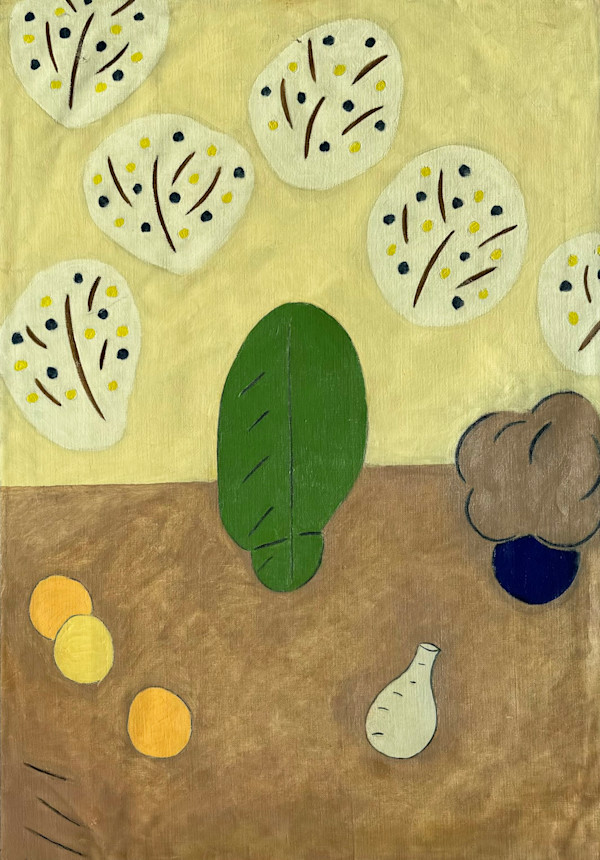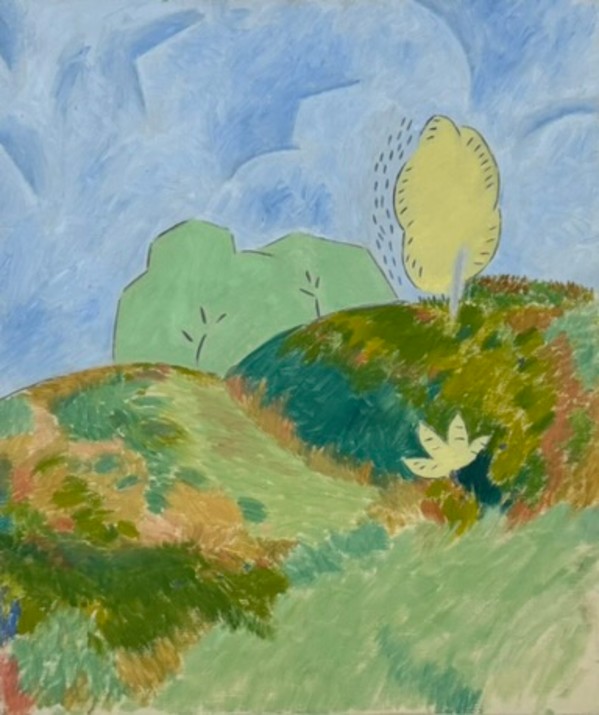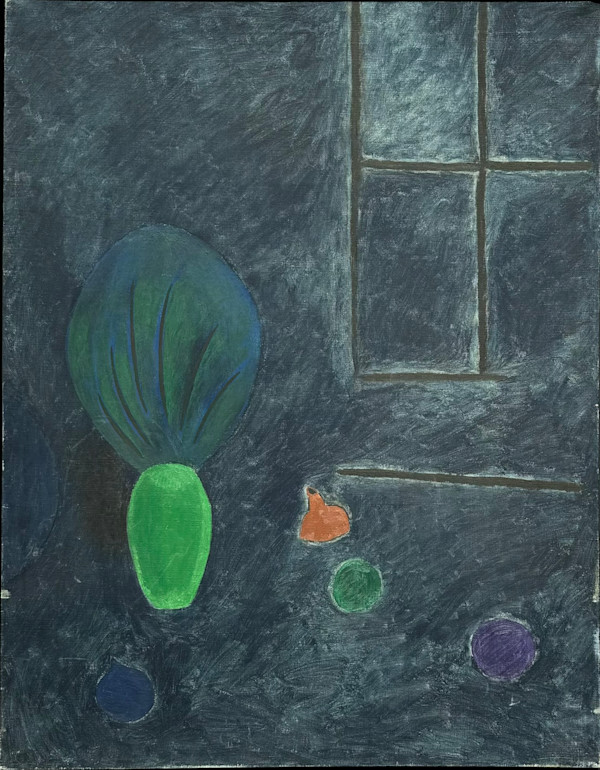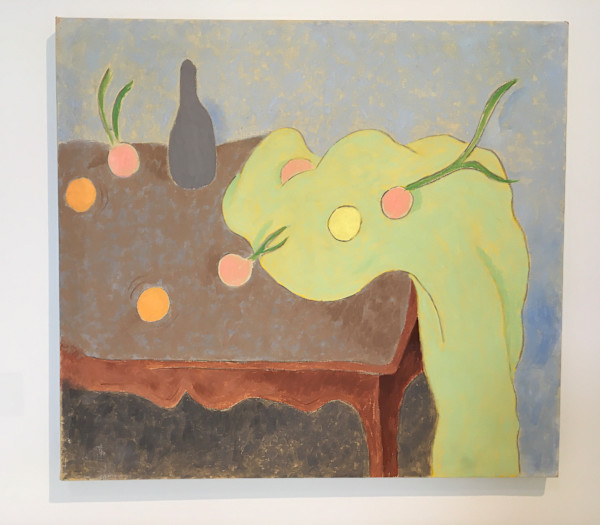- Robert Bonaparte
- Yellow Figure in Landscape, 1985
- Oil on Linen
- 29 x 24 x 1 in (73.66 x 60.96 x 2.54 cm)
- Framed: 30 x 25 x 1.25 in (76.2 x 63.5 x 3.18 cm)
- Signature: Front, bottom, left
- $11,000
This 30" x 25" work was done by Robert Bonaparte in 1985. Painted in an abstract and minimalist manner, the composition consists of a centrally focused, non-realistic figure within a minimalist, non-representational landscape. The figure is depicted in a pale yellow, with a simplified and elongated form, and seemingly could be presumed to have some sort of helmet on, but lacking any realistic detailing. It stands against a background that is representative of a landscape; the presumed ground, painted green, meets the presumed blue sky in which the horizon line is interrupted by the figure. A dark green form emerges from the left edge of the work, which could represent trees or bushes. There are five different shapes with triangular points protruding from said shapes; a bright yellow one emerges from the bottom edge, a light blue one from the bottom-right hand corner, a dark blue one in the top-right hand corner and another bright yellow one in the top-left corner. The overall composition is dominated by bold colors and abstract shapes, creating a stark contrast between the figure and its surroundings. It captures the viewer’s attention with its vivid color palette and invites personal interpretation of the human connection to the natural world.
In the vibrant aftermath of WWII, amidst an Oklahoma City blooming with cultural resurgence thanks to New Deal initiatives, a young Robert Bonaparte found his calling alongside his childhood friend and neighbor, Ed Ruscha. While Ruscha's works found global acclaim, Bonaparte's creations remained a treasured secret, known only to a select group of collectors and friends. Born in 1933 in Oklahoma City, Robert Bonaparte emerged as a pivotal yet under-recognized figure in the abstract art scene. From an early age, Bonaparte formed a profound friendship and artistic dialogue with Ed Ruscha, a relationship that would influence both artists' careers. After graduating from the University of Arizona in 1956, Bonaparte's thirst for knowledge took him to Rome, Italy, where he furthered his studies in art, broadening his perspective and technique. In 1959, alongside a cohort of Oklahoma artists, he relocated to California, where his artistic expression flourished. Bonaparte's work, known for its vibrant landscapes and introspective still lifes, has graced galleries worldwide, from Galleria "La Vetrina" in Rome to the Fred Jones Jr. Museum of Art in Norman, Oklahoma, showcasing his international acclaim and versatility. Despite the quieter recognition compared to his contemporaries, Bonaparte's contributions to the art world are invaluable.
- Subject Matter: Abstract Figure in Landscape





